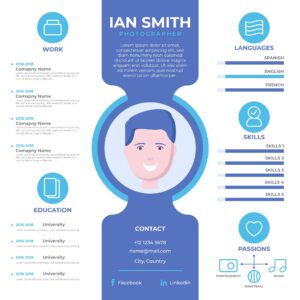How to Develop a Unique Value Proposition as a Student-Linkedin way
How to Develop a Unique Value Proposition as a Student-Linkedin way. In today’s highly competitive world, students must differentiate themselves to stand out in job markets, internships, and academic opportunities. A Unique Value Proposition (UVP) is a powerful way to showcase what makes you special and how you add value to potential employers, institutions, and professional networks. LinkedIn, being the leading professional networking platform, provides a strategic way for students to develop and present their UVP effectively.
What Is a Unique Value Proposition (UVP) for Students?
A Unique Value Proposition defines the distinctive qualities, skills, and experiences that set you apart from others. It communicates your strengths, your key competencies, and why someone should choose you over another candidate.
Unlike a generic resume summary, a UVP:
- Clarifies your strengths in a few concise and impactful statements.
- Positions you uniquely in the job market, internship pool, or academic sphere.
- Creates a lasting impression on recruiters, mentors, and peers.
Why Is a Unique Value Proposition Important for Students?
As a student, you might think that a UVP is only relevant for businesses, but that’s a misconception. A well-crafted UVP:
- Enhances your professional brand on platforms like LinkedIn.
- Increases your visibility in job and internship searches.
- Attracts networking opportunities and professional connections.
- Demonstrates self-awareness and confidence in your abilities.
Step-by-Step Guide to Developing Your Unique Value Proposition on LinkedIn
1. Identify Your Strengths and Core Skills
The first step in developing your UVP is to analyze your strengths, passions, and skills. Consider the following:
- What are your strongest skills? (e.g., analytical thinking, problem-solving, leadership)
- What unique experiences have you had? (e.g., volunteering, research projects, entrepreneurship)
- What are your passions and interests? (e.g., technology, sustainability, social impact)
2. Define Your Target Audience
Understanding your target audience helps tailor your UVP effectively. Consider:
- Are you targeting recruiters for jobs or internships?
- Are you looking for academic collaborations or research opportunities?
- Are you building a personal brand for entrepreneurship?
Each audience has different expectations, so your UVP should align with what they are looking for.
3. Highlight Your Achievements and Unique Experiences
Recruiters and professionals value real-world applications of skills over generic statements. Use concrete examples:
- Instead of: “I am a dedicated business student.”
- Use: “As a business student specializing in marketing analytics, I increased engagement by 30% in my university’s social media campaign.”
By showcasing quantifiable achievements, you demonstrate value instead of just stating it.
4. Craft a Concise and Compelling UVP Statement
A powerful UVP statement should be:
- Clear – Avoid vague descriptions.
- Concise – Ideally one to two sentences.
- Impactful – Showcase results-driven qualities.
Example UVP Statements for Students:
- Marketing Student: “I help brands grow their digital presence by leveraging SEO and content marketing strategies that drive engagement and conversions.”
- Engineering Student: “Passionate about sustainable technology, I develop energy-efficient designs and have experience working on renewable energy solutions.”
- Data Science Student: “I use data-driven insights to optimize business operations and improve decision-making, with hands-on experience in Python and machine learning.”
5. Optimize Your LinkedIn Profile with Your UVP
Once you have your UVP, integrate it across your LinkedIn profile:
- Headline: Include your UVP or a value-driven statement instead of just your degree.
- Summary/About Section: Expand on your UVP, providing more details on skills and achievements.
- Experience Section: Showcase real-world applications of your UVP through internships, projects, or volunteer work.
6. Showcase Your UVP Through Content and Engagement
A UVP isn’t just a statement—it’s a consistent personal brand. Demonstrate it by:
- Writing LinkedIn posts that reflect your expertise and insights.
- Engaging in discussions within industry groups.
- Sharing projects, articles, or case studies that align with your UVP.
7. Continuously Refine and Adapt Your UVP
Your UVP should evolve as you gain experience and skills. Regularly update your LinkedIn profile, ensuring that your UVP reflects your latest achievements and aspirations.
Common Mistakes to Avoid When Crafting Your UVP
1. Being Too Generic
Saying “I am a hardworking and dedicated student” does not differentiate you. Instead, focus on specific skills and achievements.
2. Focusing Solely on Yourself
A great UVP is not just about what you do, but also how you add value to others—whether it’s an employer, a research team, or a community.
3. Using Jargon or Buzzwords Without Substance
Avoid overused terms like “passionate team player” without backing them up with real-world examples.
4. Ignoring Personal Branding on LinkedIn
Your UVP is useless if it’s not visible. Make sure it’s clearly presented on your LinkedIn profile and professional interactions.
Conclusion
Developing a Unique Value Proposition as a Student is essential for standing out in a competitive academic and professional environment. By leveraging LinkedIn, crafting a clear UVP, and actively engaging with your professional network, you position yourself for greater career and academic success.
Thank you for read our blog “How to Develop a Unique Value Proposition as a Student-Linkedin way”
Read our more BLOG here
For Personal Branding help, feel free contact | +44.7412470170




